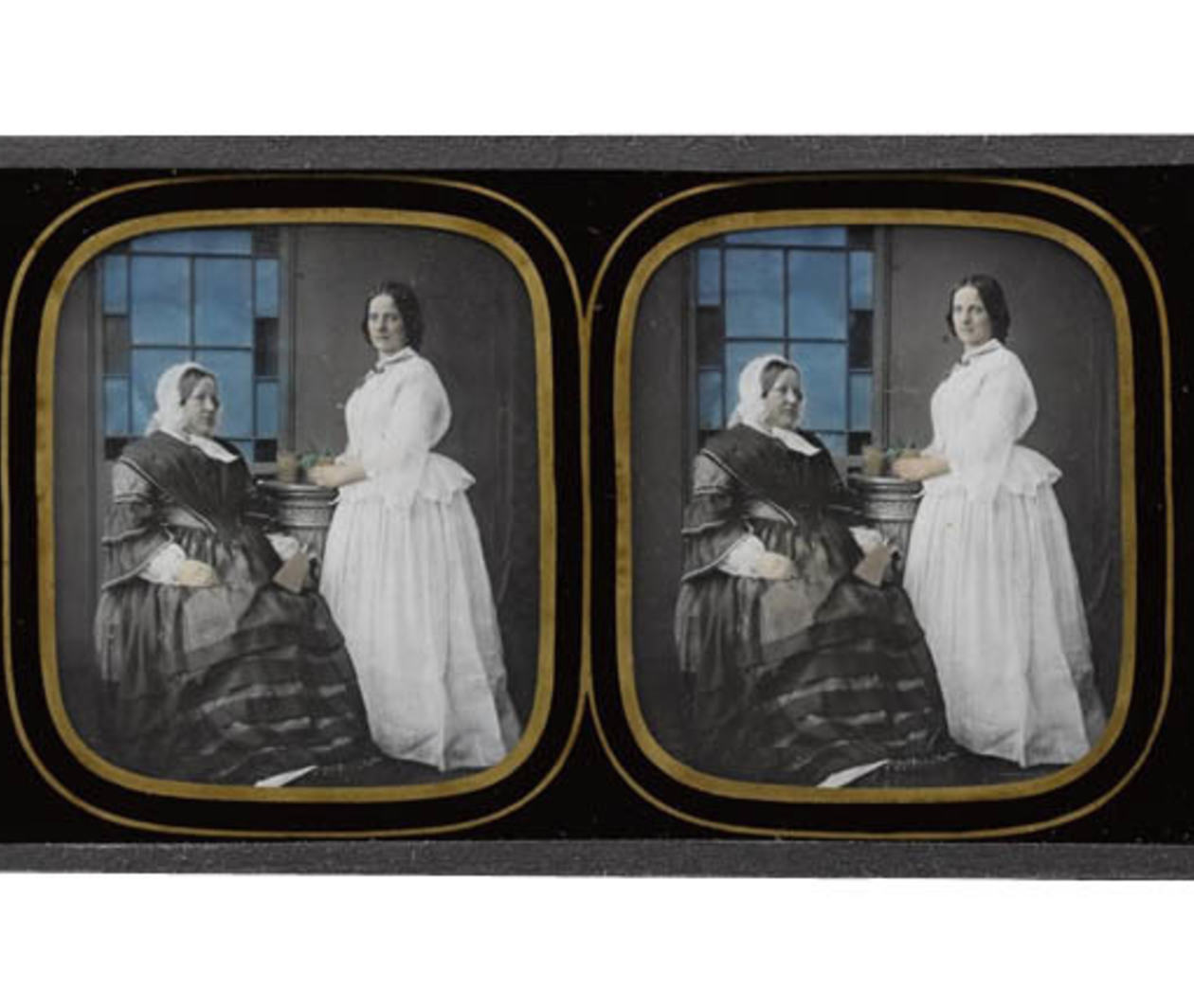
Duration
2 weeksWeekly study
3 hours
Stereoscopy: An Introduction to Victorian Stereo Photography
Other courses you might like
This course isn't running right now. We can email you when it starts again, or check out these other courses you might like.
Browse more in Creative Arts & Media and History
Following its presentation to the world at the Great Exhibition in London in 1851, the stereoscope – a device that makes images appear 3D – mesmerised Victorians. Collecting and viewing stereo photographs became a craze.
Stereoscopes were produced in different price ranges, thousands of stereo images were printed and bought each year, and one company involved in this boom, The London Stereoscopic Company, proclaimed: ‘No home without a stereoscope.’
Explore the origins of the stereoscope and stereo photography
‘Stereoscopy’ derives from the Greek ‘stereos’ meaning ‘firm’ or ‘solid’ and ‘skopeō’ meaning ‘to look’ or ‘to see’. So together, they mean ‘seeing something firm or solid’.
On this free online course, we will examine the rise of stereo photography and the work of two pioneering photographers – the Scotsman, George Washington Wilson, and the Englishman, Thomas Richard Williams.
We will explore how the stereoscope, originally created by inventor Sir Charles Wheatstone to investigate human binocular vision, was improved by scientist Sir David Brewster, to become a vital, elaborate drawing room essential.
Enjoy stereo photography from National Museums Scotland collection
To enjoy stereo photography, you usually need a stereoscope or stereo viewer, but you can enjoy this course without one.
It has been developed following the major exhibition at the National Museum of Scotland in 2015, Photography: A Victorian Sensation, and many of the images you will explore in this course are drawn from the National Museums Scotland collection.
What topics will you cover?
You have covered the key themes of the course:
- Stereoscopy
- The Great Exhibition, London, 1851
- The rise of stereo photography
- Armchair travel
- Stereo sensations in Britain
- Practitioners: GW Wilson, TR Williams
- Playing with stereo
Learning on this course
On every step of the course you can meet other learners, share your ideas and join in with active discussions in the comments.
What will you achieve?
By the end of the course, you‘ll be able to...
- Explain the stereoscopic process
- Assess the contribution of key practitioners of stereo photography in 19th century Britain
- Demonstrate awareness of the social, cultural and economic context of photography in 19th century Britain
- Describe 19th century photographic techniques
- Identify places depicted in stereo images
Who is the course for?
This course is open to anyone with an interest in photography or Victorian history. No previous knowledge or experience is required.
Who will you learn with?
I am Community Engagement Manager, Learning & Programmes at National Museums Scotland and have been writing and managing our MOOCs since 2015.
I am a photographer, photo historian & picture editor, with a master's in history of photography from the University of St Andrews. I am currently writing a book on the history of British tintypes.
Learning on FutureLearn
Your learning, your rules
- Courses are split into weeks, activities, and steps to help you keep track of your learning
- Learn through a mix of bite-sized videos, long- and short-form articles, audio, and practical activities
- Stay motivated by using the Progress page to keep track of your step completion and assessment scores
Join a global classroom
- Experience the power of social learning, and get inspired by an international network of learners
- Share ideas with your peers and course educators on every step of the course
- Join the conversation by reading, @ing, liking, bookmarking, and replying to comments from others
Map your progress
- As you work through the course, use notifications and the Progress page to guide your learning
- Whenever you’re ready, mark each step as complete, you’re in control
- Complete 90% of course steps and all of the assessments to earn your certificate
Want to know more about learning on FutureLearn? Using FutureLearn
Do you know someone who'd love this course? Tell them about it...
You can use the hashtag #FLstereoscopy to talk about this course on social media.

